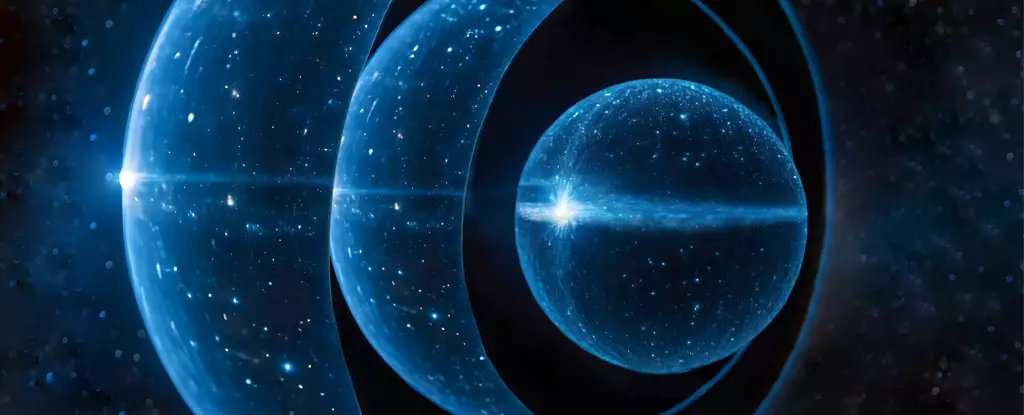Black holes have long fascinated scientists and laypeople alike, offering a glimpse into the enigmatic world of cosmic phenomena. While initially considered hypothetical monsters born from the complexities of Einstein’s general theory of relativity, black holes are now recognized as tangible celestial objects, comparable to stars and galaxies. Physicists Daniel Jampolski and Luciano Rezzolla from Goethe University Frankfurt have revisited the fundamental equations describing black holes and proposed a novel concept that provides a clearer visual representation of these mysterious entities.
Unlike traditional depictions of black holes, which often involve conflicting physics at their cores, Jampolski and Rezzolla’s model introduces the idea of a gravitationally-confined ‘bubble’ of material. This unique interpretation suggests the possibility of multiple nested bubbles within the black hole structure, offering a more intuitive perspective on these cosmic wonders. Rezzolla highlights the significance of this discovery, stating, “It’s great that even 100 years after Schwarzschild’s initial solution, new solutions can still be found, akin to discovering a hidden treasure along a well-trodden path.”
Black holes hold a deep-seated secret of physics, involving the gravitational collapse of matter within a specified Schwarzschild radius. While general relativity theory explains this phenomenon, the transition to quantum physics at the microscopic level remains ambiguous. The unresolved interplay between these two theoretical frameworks raises fundamental questions about the fate of matter under extreme gravitational forces. Additionally, the concept of Hawking radiation adds another layer of complexity, challenging conventional notions of information preservation in the cosmos.
In an endeavor to reconcile these discrepancies, physicist Pawel Mazur and astrophysicist Emil Mottola proposed the concept of a gravastar, a theoretical structure that mimics black holes externally but avoids the information paradox and quantum singularity internally. Building upon this idea, Jampolski and Rezzolla introduced the notion of nested gravatars, creating a nested ‘nestar’ configuration resembling a matryoshka doll. While the existence of these exotic cosmic formations remains speculative, the exploration of their mathematical properties offers valuable insights into the nature of black holes.
Despite the theoretical nature of these propositions, delving into the mathematical intricacies of gravastars and nestars serves a crucial purpose in advancing our understanding of black holes. By pushing the boundaries of theoretical exploration, scientists pave the way for potential observations that could shed light on the most perplexing mysteries surrounding these cosmic entities. Rezzolla acknowledges the current limitations, noting, “Unfortunately, we still lack the means to create a gravastar in reality. Nevertheless, probing the mathematical aspects of these solutions contributes to our overall comprehension of black holes.”
The reinterpretation of black holes through the lens of gravastars and nestars offers a fresh perspective on these enigmatic entities, highlighting the fertile ground for innovation and discovery within the realm of theoretical astrophysics. While the true nature of black holes may remain veiled in mystery, the ongoing exploration of alternative models and concepts brings us closer to unraveling the complexities of the universe’s darkest secrets.


Leave a Reply